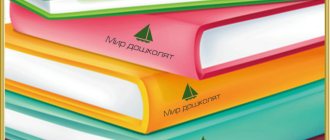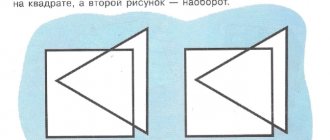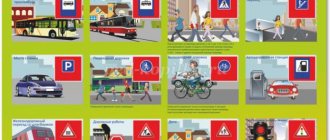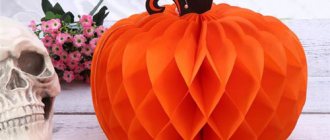reference Information
Documents • Laws • Notices • Document approvals • Contracts • Requests for proposals • Technical specifications • Development plans • Document management • Analytics • Events • Competitions • Results • City administrations • Orders • Contracts • Work execution • Protocols for consideration of applications • Auctions • Projects • Protocols • Budgetary organizations Municipalities • Districts • Education • Programs Reports
: • by references • Documentary base • Securities
Regulations
: • Financial documents
Resolutions
: • Categories by topic • Finance • cities of the Russian Federation • regions • by exact dates Regulations
Terms
: • Scientific terminology • Financial • Economic
Time
: • Dates • 2015 • 2016 Documents in the financial sector • in the investment sector • Financial documents - programs
"A man made of geometric shapes."
GCD for design Venue: game room
Topic of the week: “ I am human. (Our body)"
Topic of the lesson: “Man made of geometric shapes.”
Integration of educational areas: “Cognitive development” (construction), “Speech development”, “Artistic and aesthetic development”. “Social and communicative development”, “Physical development”.
Goal: Development of the ability to construct a silhouette of a person from paper.
Tasks:
- Give an idea of the human structure
- To form in children a sustainable interest in constructive activities; desire to experiment, create, invent;
- Develop attention, ability to concentrate, memory, logical thinking; small muscles of the hands (motility);
- Develop the ability to analyze, highlighting the characteristic features of an object, functional parts; establish a connection between their purpose and structure; continue to develop the skills to correctly and quickly navigate in space;
- Cultivate respect for your own and other people’s work.
Materials: geometric shapes, glue, cardboard
Methods and techniques:
- Verbal (conversation, explanation)
- Visual (show)
- Practical (finger gymnastics)
Move
| Activities of a teacher | Children's activities | Planned results |
| Introductory part: Good morning, guys! I am glad to see all the children in our group healthy and cheerful! I really want you to remain in this mood until the evening! And for this we must smile more often and help each other! No ordinary guest came to visit us. I will tell you a riddle, and you must guess it. | Children sit in a semicircle on the carpet Children say hello | Development of cognitive interest. Development of communication skills |
| In this flowery town, summer shines all year round. And the people here are cheerful - they call them shorties. Among them there is Pilyulkin, Buttercup - you can’t count them all. The most important one, guess what? Well, of course (Dunno!) | Children's answers | Development of logical thinking. Vocabulary enrichment |
| Main part: Dunno: good morning guys! I came to you for help. I want to learn how to make a man out of geometric shapes, but I don’t know how. I don't know the names of the figures, and I don't know the body parts. Will you help me? | Say hello to Dunno | Development of communication skills |
| Q: Guys, can we help Dunno? I will show you geometric figures, and you must name them and say what part of the body this figure resembles. | Children's answers | Development of logical thinking, naming geometric shapes correctly |
| Shows alternately (circle, oval, rectangle, triangle) And now we will show Dunno how to make a little man out of these parts. | Name geometric shapes | |
| Let's stretch our fingers "Our body" | development of attention | |
| Here's a hand, and here's a hand - Clap, clap, clap. | Extend your right hand forward, then your left hand; clap your hands | Development of motor activity, fine motor skills |
| Here's a leg, and here's a leg - Gop, hop, hop. | Put your right foot forward, then your left; walk in place | |
| Well, this is the head. | Hold your head in your hands | |
| You can make two nods. | Perform forward head tilts | |
| We sit down at the tables and find the necessary figures for the little man. We lay them out on cardboard and then glue them. Look what wonderful little people we have made. | Sit down at the tables Select geometric shapes, lay them out and glue them onto cardboard | Developing the ability to listen to the teacher and complete the task |
| But something is missing! What do you guys think is missing? That's right, they don't have a face. What do we need to do for this? That's right, draw! Q: Dunno, did you remember what the geometric shapes are called and what parts of the body are there? | Children's answers | Development of constructive skills |
| Dunno: Yes, I remember everything, thank you guys! It's time for me to go home, goodbye! | Saying goodbye to Dunno | Development of communication skills |
| Reflection: Guys, let's remember our lesson. Who came to visit us? What did we do today? What did we make little men out of? How did they turn out? What have you learned? What was difficult for you? | Children's answers | Development of mental and speech activity and the ability to draw conclusions |
Education and science
Science
: Tests • Scientific and technological progress • Pedagogy • Work programs • Faculties • Methodological recommendations • School • Vocational education • Student motivation
Subjects
: Biology • Geography • Geology • History • Literature • Literary genres • Literary characters • Mathematics • Medicine • Music • Law • Housing Law • Land Law • Criminal Law • Codes • Psychology (Logic) • Russian Language • Sociology • Physics • Philology • Philosophy • Chemistry • Jurisprudence
The purpose of the didactic game “Figures”
The card index lists games with many didactic functions that ensure the comprehensive development of the child. But their common goal is to form an idea of geometric shapes.
General tasks:
- memorization and comprehension of geometric figures;
- consolidation of ideas about colors and outlines of surrounding objects;
- development of visual, including color, spatial and planar perception;
- improving the skills of comparative analysis, classification, generalization;
- memory training, concentration, intelligence, and the ability to think logically;
- formation of the skill of ordinal counting, primary mathematical knowledge;
- improvement of finger motor skills, general physical development;
- expansion of individual vocabulary, development of the skill of detailed answers to questions;
- nurturing perseverance, determination, independence, observation, the ability to act according to rules and instructions, and work productively in a team.
Business and finance
Business
: • Banks • Wealth and prosperity • Corruption • (Crime) • Marketing • Management • Investments • Securities: • Management • Open Joint Stock Companies • Projects • Documents • Securities - control • Securities - valuations • Bonds • Debts • Currency • Real estate • (Rent) • Professions • Work • Trade • Services • Finance • Insurance • Budget • Financial services • Loans • Companies • State enterprises • Economics • Macroeconomics • Microeconomics • Taxes • Audit Industry
:
• Metallurgy • Oil • Agriculture • Energy
Construction
• Architecture • Interior • Floors and ceilings • Construction process • Building materials • Thermal insulation • Exterior • Organization and production management
Photo blogs
Art
• Children's creativity • Paintings • Art • Congratulations • Film review • Musical world • Russian rock
World
• People of the world • The world around us • My homeland is the USSR • Nature Channel • Stones and minerals • Cooking, food • Construction and architecture • Under construction • Transport • Weapons • Military transport
beauty
• Fashion Pandia.ru • Girls and Girls
School
• Tests for the Unified State Exam • Solver books • Unified State Examination • 10th and 11th grades • Various textbooks • 4th grade • Russian language grades 5-9 • 5th grade • 6th grade • 7th grade • 8th grade
Wisdom
• Cliparts • Quotes
Author Directory (private accounts)
AutoAuto service • Auto parts • Products for auto • Auto repair centers • Auto accessories • auto parts for foreign cars • Body repair • Auto repair and maintenance • Car chassis repair • Auto chemicals • oils • technical centers • Gasoline engine repair • auto electrical repair • Automatic transmission repair • Tire fitting BusinessAutomation of business processes • Online stores • Construction • Telephone communications • Wholesale companies LeisureLeisure • Entertainment • Creativity • Catering • Restaurants • Bars • Cafes • Coffee shops • Night clubs • Literature TechnologiesAutomation of production processes • Internet • Internet providers • Communications • Information technologies • IT companies • WEB studios • Website promotion • Software sales • Switching equipment • IP telephony | InfrastructureCity • Authority • District administrations • Courts • Utilities • Teen clubs • Public organizations • City information sites The sciencePedagogy • Education • Schools • Training • Teachers GoodsTrading companies • Trade and service companies • Mobile phones • Accessories for mobile phones • Navigation equipment |
How to make a paper boat applique with your own hands
To create such a craft, we prepared:
- square sheet of single-sided colored paper;
- black felt-tip pen.
First, our workpiece needs to be bent along diagonal lines.
Now we bend one of the corners (for convenience, we took the top one) towards the very center of the workpiece.
The same bent corner must be bent upward.
Finally, we make another fold of the same corner, but this time we bend it down.
We fold the blank of the future boat in half lengthwise.
All we have to do is form the side of our ship. To do this, you need to bend the bottom part upward at a slight angle. The width of this fold will determine the height of the side.
Now the fold needs to be straightened so that the colored paper is on the outside.
If necessary, the inner sides of the applique can be slightly secured with glue.
The final stage of our craft will be drawing portholes. We apply them using a black felt-tip pen.
Tangram is an ancient oriental puzzle made from figures obtained by cutting a square into 7 parts in a special way: 2 large triangles, one medium one, 2 small triangles, a square and a parallelogram. As a result of folding these parts together, flat figures are obtained, the contours of which resemble all kinds of objects, from humans, animals to tools and household items. These types of puzzles are often called "geometric puzzles", "cardboard puzzles" or "cut puzzles".
With a tangram, a child will learn to analyze images, identify geometric shapes in them, learn to visually break an entire object into parts, and vice versa - to compose a given model from elements, and most importantly - to think logically.
Middle group
We offer didactic games for children “Geometric Shapes”, which can be used in the middle age group, that is, for pupils 4-5 years old.
Wonderful bag
Take a medium-sized bag of opaque material for the game, pick up several medium-sized objects that have a clearly defined geometric shape: a ball, a ball of thread, an apple, a box of pencils, a cube, a box of matches, etc. Put everything in a bag, ask your child to draw out only round-shaped objects, then only rectangular ones.
Geometric football
The game introduces preschoolers to two spatial objects: a ball and a cube. Build something like a football goal on the table. Ask your child to roll first the ball into the goal, then the cube. Then help the student draw conclusions: the ball has no corners, so it rolls easily; the cube is more difficult to move due to the presence of edges, but it is more stable on a horizontal surface.
House for a hedgehog
To play, cut out triangles of different sizes: take two paper squares - one larger, the other smaller, and cut them diagonally. Lay out the resulting figures in front of the student, tell them that autumn has come, the hedgehog is getting ready to fall asleep until spring, you need to help him build a cozy house from all the triangles presented.
Fish
Cut triangles from square sheets using the method described above. Ask your preschooler to make a fish out of the shapes. This can be done in several ways, the main thing is that the triangles should not intersect. If the child likes some version of the geometric fish more than others, you can make an applique out of it using glue.
Relay race
Divide the students into two teams. Each group of children stands in a row. Place a stool at the beginning of each row. At the other end of the room, place cardboard squares and triangles mixed together on the table.
When the start sounds, the players take turns running up to the table, grabbing the piece, and carrying it to their stool. The first team must collect squares, the second - triangles. The game ends when all players in one of the teams have participated in the relay. This team wins, but only if the pieces are assembled correctly.
Say it in one word
For the game, prepare groups of geometric shapes, united by shape, but with different other characteristics. For example, large and small rectangles, circles of different colors. Place objects on the table in groups of 4. The child must name them with a general word.
Arrange by size
For the game, make paired geometric shapes: one object in the pair is large, the second is small. Place two squares on the table. The student’s task is to place other objects on the squares according to their size. That is, you need to put large triangles, ovals, etc. on a large square, and equally small ones on a small one.
Didactic game “Find the figures”
For a board game, make paired cards depicting several geometric shapes. Take some pictures from the pairs and place the others on the table. Show the children the cards one by one, and they must find similar images on the table.
Find a house
For an active game, give the children a small geometric image: one is a circle, another is a square, another is a triangle, and so on. Place stools with corresponding shapes in different places in the playroom. Turn on music to which children should run around the room and dance. When the music stops, children must quickly find their “house,” that is, a stool, and run up to it. The game can be complicated: move the stools away so that the players do not notice it.
Didactic game “Shapes and Forms”
To play, print out geometric pictures. Show your child the shapes at random, and he must name the object of the corresponding shape. For example, having seen a circle, a student can name the following objects: apple, ball, orange, wheel, sun.
What's hidden
Place geometric images in front of the student. Let the preschooler look at them carefully, then close his eyes and not peek. Hide one of the pictures. The student, having opened his eyes, must remember which figure disappeared.




